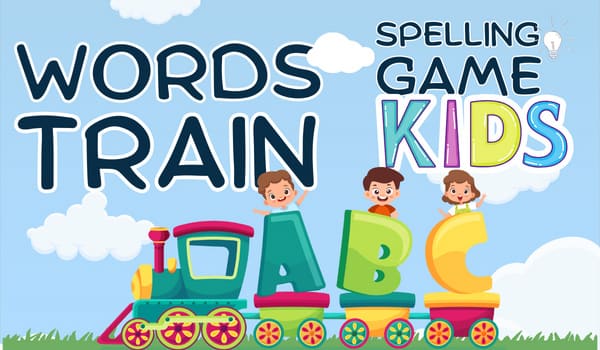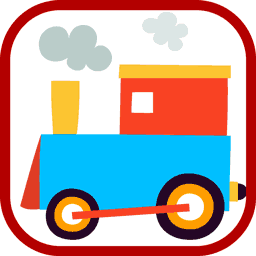Language and relational abilities are fundamental to children’s verbal development, in which communication enhances social skills. Important communication helps kids to learn quickly. Furthermore, it prepares them to take part in socialization. Communication involves different ways, where your child learns other languages rapidly. Communication is the oral method for correspondence, and language utilizes shared principles to assemble words to communicate thoughts and emotions. The best guide to language development in children will develop different cognitive skills and abilities to interact through various aspects of learning.
Since parents are children’s first instructors, information on language development in children improves a parent’s capacity. To encourage your child to speak in their native language, here is the best guide to language development in children.
Things to Encourage Language Development in Children:
As mentioned earlier, language development is fundamental to verbal skills. Communication plays a significant role in learning social skills and applying them in further development. Unsurprisingly, kids quickly absorb and pick up words that are not part of the language. Since you do not have to correct speaking all the time, there are simple ways to ensure effective language development with your child.
Talk A LOT:
Communication is face-to-face interaction where your child will talk about anything to grasp words at a young age. The more you speak with your child, the more they will engage in a conversation. Even if they take time to absorb words, they will still find a way to communicate with you. Once you interact with your child, they will copy and communicate in different settings and apply it in their surroundings. If you speak two or more languages, this will ensure a fantastic way for kids to learn other languages at a young age.
Yes, Answer every single notion your children make. Their babbles and giggles are the first phrases of communication. Answer them all. It teaches in their mind that, Whatever they say is an output.
Read A LOT:
Reading is another method to help your child to interact with books. Once your child gets into reading, they will have a fair grasp of picking up words they have never heard before. To get into the habit of reading is, to begin with, alphabetical and short stories books. It will help to learn how letters and words are formed to enhance different social skills.
Since it is never too soon to read with your child, one great indicator is the future of measuring the time parents go through reading with their kids. Parents begin with the essential books and work the way to pictures and long stories as kids become familiar. If you live in a place where there is a library nearby, this is an excellent place to take your child to the library and involve communication. It will build an affection for loving books and develop language fluently.
Make Story-Telling a Habit:
There could not be better interaction than telling imaginative stories where kids will absorb information and keep in mind the imaginary world. Parents sometimes tell stories that lack interest and show weak communication development. It results in struggling to communicate and asking questions unrelated to the real world. To speak with your child well is to make up stories that fit your child’s advantage. Once you tell stories to your child, they will expand their imagination of building words and help to ask questions in further learning.
Let your child lead:
If your little one appears keen on a specific picture in a book, continue discussing it. Moreover, if fascinated by a vessel, give more pontoons and discussion about them. Rehash their chatters back to them, pose inquiries, and associate with them. You can even give recording to your kid a shot with a recording device and play it around.
When your child tries to speak, please do not interrupt, correct, or criticise, as this will hinder their confidence and their struggle to communicate in later stages. Also, they will be reluctant to keep trying new things, and they take this as negative feedback. The more your child leads through communication, the more they will develop their native language.
Use Educational apps:
Learning apps can do wonders! According to studies, toddlers who use learning apps begin talking much faster than children who are devoid of such a facility. The digital learning age has made accessibility and convenience easier, where children can access the app and learn to communicate on the go. It is also great for those kids who struggle to speak at a young age. It is ideal for those kids that speak more than one language.
If your child has trouble communicating, use the Alphabet Flashcards app to help kids to learn the letters quickly. Interactive functions help kids to engage with effective communication. Another way to interact with your child to communicate and absorb new words is to access the Alphabet Vocabulary app. The educational tool consists of eight terms of each letter to develop vocabulary learning and has four fonts to select for ease of readability. Each object’s sound helps kids communicate through the sounds and develop how the things are pronounced.
Play Music or Sing to your baby:
Whether your child listens to melody tunes or sings Nursery Rhymes, music considers the best guide to language development in children. It is because children learn to play music or sing a song by enriching the connection between a music environment and the child’s memory. Play your child’s favorite tunes in the car or kitchen while cooking to keep your child interacting. The more your child sings or listens to music, the more they will communicate and absorb the song’s lyrics.
Use open-ended questions:
Using open-ended questions is the best way to begin the early stages of communication. Rather than asking short-ended questions, ask your child questions and allow your child to explain. You will be surprised that kids will say short to long sentences and begin communicating efficiently. Once you ask explanatory questions, they will try to think and come up with an explanation.
Include gestures and noises:
Children quickly pick up gestures and noises from their parents and siblings around the house. Once your child absorbs noises and gestures, they will find it easier to distinguish the changes in pitch, volume, and other elements of communication. Also, they can form the connection between crying and the parent coming to the rescue. Children who point at specific things understand what they want and make noises for effective communication. Even if your child cannot engage in a conversation, they still pay attention to everything you do and use it as an early stage of communication.
Do a dramatic play:
Playing with your child is not always about building imagination. It is also about enhancing your child’s communication skills. Engaging in dramatic play is one of the best guides to allow your child to learn storylines, characters, and emotions. All these things help to increase vocabulary and build communication by connecting phrases to form sentences.
Wrap Up
Communication is one of the essential aspects of early learning, where kids learn to interact by participating in socialization. The best guide to language development in children helps kids to enhance oral communication skills. It builds language through developing cognitive skills and interacting with various learning routines.


